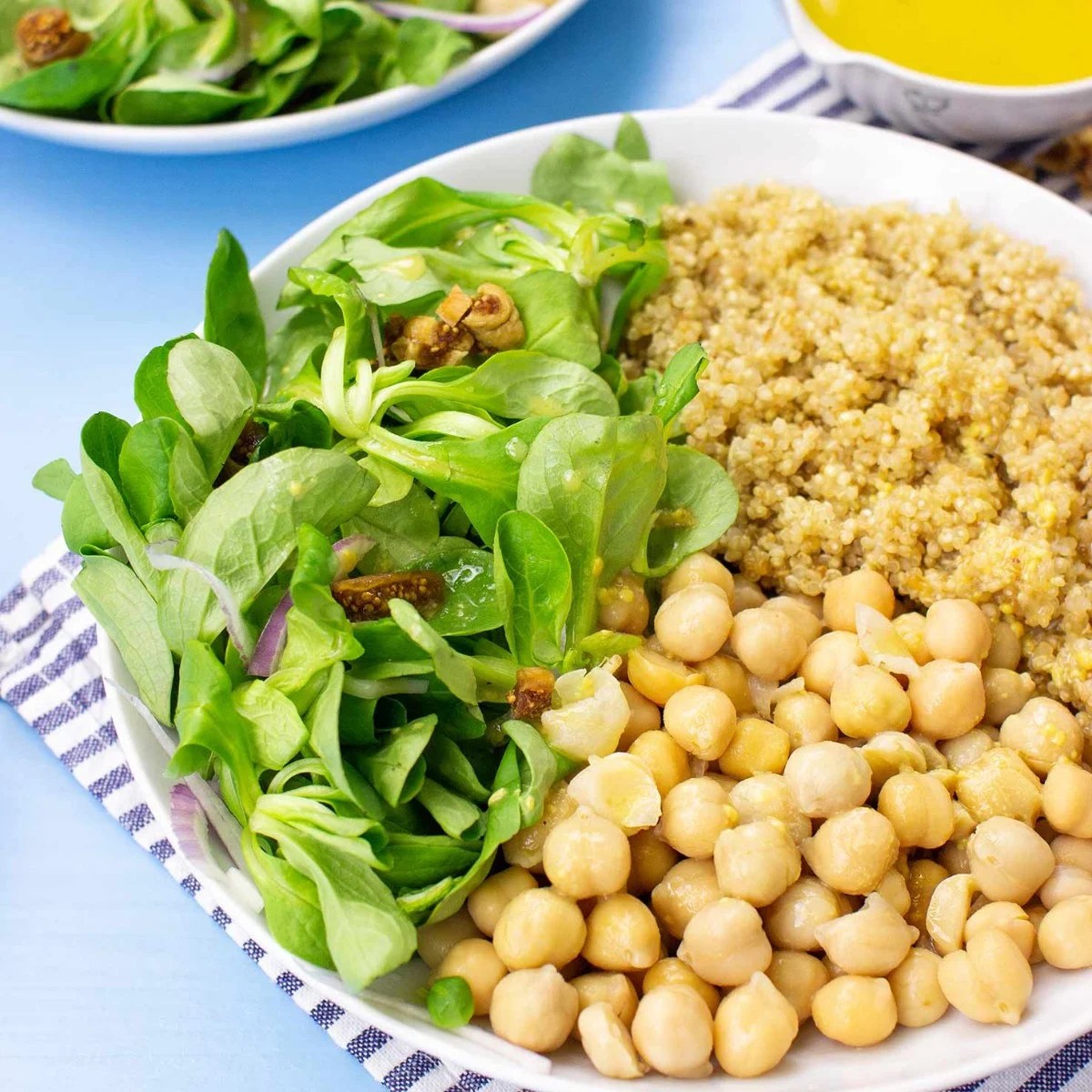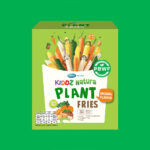Unleash your inner chef and discover a world of vibrant flavors with these delectable vegan dinners! Forget bland, boring plant-based meals; this culinary journey showcases the incredible versatility of vegan cuisine, transforming simple ingredients into unforgettable dishes that will delight even the most discerning palates. Imagine rich, savory sauces clinging to perfectly cooked tofu, the satisfying crunch of roasted vegetables, and the aromatic steam rising from a fragrant curry. Prepare to be amazed by the depth of flavor and the sheer satisfaction of creating nourishing, delicious meals without compromising on taste or texture.
We’ll explore the nutritional powerhouses of popular vegan ingredients, from protein-packed lentils to the umami richness of mushrooms. Then, we’ll dive into three unique and detailed recipes, guiding you step-by-step through the cooking process with vivid descriptions that bring the culinary experience to life. Learn practical tips and tricks to elevate your vegan cooking skills, mastering techniques that will ensure every meal is a masterpiece. Finally, we’ll explore creative serving suggestions to elevate your presentation, transforming each dish into a visual feast.
Popular Vegan Dinner Ingredients
Vegan cuisine offers a vibrant array of delicious and nutritious options, and its popularity stems from the versatility and health benefits of its core ingredients. Many staples provide complete protein, essential vitamins, and fiber, making vegan meals both satisfying and good for you.
Choosing the right ingredients is key to creating exciting and flavorful vegan dinners. Understanding their nutritional profiles and culinary applications allows for endless creative possibilities in the kitchen.
Top Five Vegan Dinner Ingredients
Five ingredients consistently stand out for their versatility and nutritional value in vegan cooking: tofu, tempeh, lentils, chickpeas, and seitan. These form the base of countless dishes, from hearty stews to light and refreshing salads. Their nutritional profiles complement each other, offering a balanced intake of protein, fiber, and essential vitamins and minerals.
Nutritional Comparison of Popular Vegan Ingredients
The following table provides a comparison of the nutritional content (per 100g serving) of these five key ingredients. Note that nutritional values can vary slightly depending on the brand and preparation method.
| Ingredient | Protein (g) | Fiber (g) | Iron (mg) | Vitamin Content (Examples) |
|---|---|---|---|---|
| Tofu | 8-10 | 1-2 | 1-2 | Calcium, Magnesium |
| Tempeh | 18-20 | 4-5 | 3-4 | Vitamin B12 (fermented varieties), Iron |
| Lentils | 9-10 | 8-10 | 3-4 | Folate, Potassium |
| Chickpeas | 7-8 | 8-10 | 2-3 | Folate, Manganese |
| Seitan | 20-25 | 2-3 | 1-2 | Various B vitamins |
Visual Representation of Ingredient Applications
Imagine a visual grid. Each square represents a different dish. Tofu, a versatile blank canvas, could be depicted in the top-left corner, transformed into crispy tofu steaks in one square, creamy tofu scramble in another, and cubed in a vibrant stir-fry in a third. Tempeh, with its earthy, slightly chewy texture, might be shown in the middle row, featured in a hearty tempeh bacon, a flavorful tempeh burger, and a rich tempeh stew. Lentils, a staple in soups and stews, are visualized in a hearty lentil soup, a vibrant lentil salad, and a comforting lentil loaf. Chickpeas, equally adaptable, could be seen in hummus, a chickpea curry, and a refreshing chickpea salad. Finally, seitan, a meaty alternative, is shown in seitan steaks, seitan “chicken” nuggets, and a flavorful seitan stir-fry. This grid visually communicates the multifaceted nature of these ingredients and their suitability for a wide range of culinary creations.
Step-by-Step Cooking and Visual Descriptions

This section details the preparation of a vibrant and flavorful One-Pan Roasted Mediterranean Vegetables with Lemon-Herb Quinoa. This recipe is a complete meal, showcasing the beauty of simple, fresh ingredients transformed through mindful cooking. The process is straightforward, yielding a dish that’s both visually appealing and incredibly delicious.
One-Pan Roasted Mediterranean Vegetables with Lemon-Herb Quinoa
This recipe provides a colorful and aromatic vegan meal, perfect for a weeknight dinner or a casual gathering. The roasting process intensifies the natural sweetness of the vegetables, while the lemon-herb quinoa adds a refreshing and zesty counterpoint.
- Preparation: A Symphony of Colors and Textures
Begin by preheating your oven to 400°F (200°C). Gather your ingredients: a medley of vibrant vegetables – red bell peppers (their glossy skin hinting at sweetness), zucchini (with their tender, pale green flesh), yellow squash (similarly soft and sun-kissed), red onion (with its sharp, pungent aroma), and cherry tomatoes (bursting with juicy redness). Chop the peppers, zucchini, and squash into roughly 1-inch pieces. Halve the cherry tomatoes. Slice the red onion into half-moons. The resulting mixture is a riot of color, a painter’s palette of summer hues. A fragrant drizzle of olive oil coats the vegetables, promising a rich, savory taste. - Roasting: The Dance of Heat and Flavor
Toss the chopped vegetables with 2 tablespoons of olive oil, salt, black pepper, dried oregano, and a generous pinch of red pepper flakes. The aroma of oregano, earthy and warm, blends with the subtle heat of the red pepper flakes. Spread the vegetables in a single layer on a large baking sheet. The vibrant colors – the deep red of the peppers, the sunny yellow of the squash, the deep purple of the onions – are now ready for their transformation in the oven. Roast for 25-30 minutes, or until the vegetables are tender and slightly caramelized. The edges will begin to brown slightly, adding depth and complexity to their flavor. The air fills with the delicious scent of roasted vegetables, a promise of the feast to come. - Quinoa: A Light and Zesty Counterpoint
While the vegetables are roasting, prepare the quinoa. Rinse 1 cup of quinoa under cold water until the water runs clear. Combine the rinsed quinoa with 2 cups of vegetable broth in a saucepan. Bring to a boil, then reduce heat to low, cover, and simmer for 15 minutes, or until all the liquid is absorbed. The fluffy, pearly grains of quinoa absorb the broth, creating a light and subtly savory base. Once cooked, fluff the quinoa with a fork and stir in the zest and juice of one lemon, 2 tablespoons of chopped fresh parsley (its bright green a welcome contrast to the roasted vegetables), and a tablespoon of olive oil. The bright citrus notes of the lemon cut through the richness of the roasted vegetables, creating a balanced and refreshing flavor profile. - Plating: A Visual Feast
Once the vegetables are roasted and the quinoa is prepared, it’s time to plate your masterpiece. Spoon a generous portion of the lemon-herb quinoa onto a plate. Mound the roasted vegetables on top, creating a visually stunning contrast of colors and textures. The glossy sheen of the roasted vegetables against the soft, fluffy quinoa is both inviting and appetizing. A final sprinkle of fresh parsley adds a touch of elegance, completing the vibrant and flavorful presentation.
Tips and Tricks for Vegan Cooking Success
Mastering the art of vegan cooking involves more than just swapping out animal products. It’s about understanding flavor profiles, textures, and techniques to create truly satisfying and delicious meals. This section will equip you with practical tips and solutions to common challenges, ensuring your vegan culinary journey is a rewarding one.
Understanding Flavor Building in Vegan Cuisine
Building rich and complex flavors in vegan dishes requires a strategic approach. Unlike dishes with meat or dairy, where inherent richness is present, vegan cooking often necessitates a more conscious effort to create depth. This involves layering flavors through the careful selection and combination of ingredients.
- Embrace Umami: Umami, the savory fifth taste, is crucial for creating depth in vegan cooking. Ingredients like mushrooms (shiitake, portobello), soy sauce, nutritional yeast, miso paste, and tomatoes are excellent sources of umami, adding a savory richness that elevates the overall taste profile. Imagine the deep, earthy flavor of shiitake mushrooms in a rich vegan stew, perfectly balanced by the salty tang of soy sauce.
- Master the Art of Browning: Browning vegetables, tofu, or tempeh in a pan before adding them to a dish creates a delicious Maillard reaction, resulting in complex flavors and a satisfying texture. Think of the crispy edges of perfectly seared tofu, offering a delightful textural contrast to the softer interior.
- Layer Flavors Strategically: Don’t rely on a single flavor source. Instead, build layers of flavor by incorporating herbs, spices, acids (like lemon juice or vinegar), and aromatics (like garlic and onion) at different stages of cooking. A simple example is a vegan chili, where onions and garlic are sautéed first, then spices are added, followed by vegetables, beans, and finally a squeeze of lime juice at the end for brightness.
- Don’t Underestimate Spices and Herbs: Spices and herbs are essential for adding vibrant flavors and aromas to vegan dishes. Experiment with different combinations to find your favorites. A vibrant curry powder, bursting with warmth and aromatic spices, brings an explosion of flavor to a vegan lentil stew.
- Use Acid to Your Advantage: A touch of acidity can brighten up a dish and balance rich flavors. Lemon juice, lime juice, vinegar, or even a splash of wine can make a significant difference. Imagine a vegan pasta dish, where a bright lemon zest and juice cut through the richness of the creamy cashew sauce.
Addressing Common Vegan Cooking Challenges
Many aspiring vegan cooks encounter similar hurdles. Understanding these challenges and having effective solutions readily available is key to consistent success.
- Tofu Texture: Tofu can be bland and rubbery if not prepared correctly. Pressing tofu to remove excess water is crucial for achieving a firmer texture. Marinating tofu in flavorful sauces also enhances its taste and prevents dryness. Visualize the transformation: a block of bland tofu becomes a flavorful, firm cube ready to be pan-fried or baked, its texture enhanced by pressing and its taste boosted by a vibrant marinade.
- Veganizing Classic Dishes: Adapting traditional recipes often requires creative substitutions. For example, mayonnaise can be replaced with vegan alternatives made from cashews, tofu, or potatoes. Imagine the creamy texture of a vegan mayonnaise made from soaked cashews, seamlessly replacing its dairy counterpart in a vegan potato salad.
- Balancing Flavors: Achieving a balanced flavor profile in vegan dishes requires attention to detail. Too much salt, sweetness, or acidity can easily overwhelm the other flavors. Taste as you go and adjust seasonings accordingly. Picture a perfectly balanced vegan stir-fry, where each ingredient contributes its unique flavor, creating a harmonious symphony of tastes.
Serving Suggestions and Presentation
Elevating your vegan dinners from satisfying meals to truly memorable experiences hinges on thoughtful serving suggestions and artful presentation. The visual appeal of a dish significantly impacts the dining experience, enhancing the enjoyment and creating a more satisfying culinary journey. Careful consideration of plating techniques and accompanying side dishes can transform a simple meal into a feast for the eyes and the palate.
The following sections detail creative serving suggestions for three exemplary vegan dinner recipes, emphasizing visual appeal and the enhancement of the overall dining experience. We’ll explore how to use plating techniques and complementary side dishes to create a truly stunning and delicious meal.
Plating Techniques and Side Dish Suggestions
Plating is an art form that can dramatically enhance the perception and enjoyment of a meal. Consider the colors, textures, and heights of the elements on the plate. Aim for a balanced and visually appealing arrangement. The use of contrasting colors and textures can create a more dynamic and interesting presentation. For example, a vibrant green salad alongside a rich, earthy main course provides a beautiful visual contrast. Additionally, varying the heights of the elements on the plate adds depth and dimension.
A well-chosen side dish can complement the main course, adding both flavor and visual interest. Consider textures – a creamy sauce alongside a crisp vegetable, or fluffy rice with a hearty stew. Think about flavor profiles – a slightly sweet and tangy side dish can balance a savory main course. The strategic pairing of side dishes and main courses creates a cohesive and harmonious culinary experience.
Recipe Serving Suggestions
| Recipe | Suggested Side Dish | Plating Style |
|---|---|---|
| Creamy Tomato and Basil Pasta | Garlic Bread, Arugula Salad | Swirl the pasta onto a plate, creating a visually appealing mound. Garnish with fresh basil leaves. Arrange the garlic bread on the side, and place the arugula salad in a small bowl beside the pasta. The contrasting colors of red pasta, green basil, and the golden-brown garlic bread create a vibrant and appealing presentation. |
| Lentil Shepherd’s Pie with Sweet Potato Topping | Steamed Green Beans, Roasted Carrots | Spoon the lentil filling into an oven-safe dish. Top with the mashed sweet potato, creating a smooth, even layer. Bake until golden brown. Serve directly from the dish, garnished with fresh parsley. The contrasting textures of the hearty lentil filling and the smooth sweet potato topping create visual interest. The vibrant green of the green beans and orange of the carrots add further visual appeal when served alongside. |
| Roasted Cauliflower Steaks with Tahini Dressing | Quinoa Salad, Roasted Brussels Sprouts | Arrange the roasted cauliflower steaks on a plate, slightly overlapping. Drizzle the tahini dressing over the steaks. Place the quinoa salad on one side of the plate and the roasted Brussels sprouts on the other, creating a balanced and visually appealing arrangement. The rich brown color of the cauliflower contrasts beautifully with the creamy white tahini dressing and the vibrant colors of the quinoa and Brussels sprouts. |
From the satisfying heartiness of lentil stews to the vibrant explosion of flavors in Mexican-inspired bowls, these vegan dinners are more than just meals; they’re a celebration of fresh, wholesome ingredients and culinary creativity. By mastering the techniques and embracing the tips shared here, you’ll not only expand your culinary repertoire but also discover the joy of creating delicious, plant-based meals that are both nourishing and utterly satisfying. So, gather your ingredients, embrace the process, and prepare to delight your taste buds and impress your friends and family with these unforgettable vegan creations. The journey to delicious, plant-based dining starts now!
FAQ Resource
What are some common substitutions for tofu in these recipes?
Tempeh, seitan, chickpeas, or even hearty mushrooms can often be used as substitutes for tofu, depending on the recipe and desired texture. Consider the protein content and water absorption when making substitutions.
How can I make these recipes even more flavorful?
Experiment with different spices, herbs, and sauces! Don’t be afraid to add a touch of acidity (lemon juice, vinegar) or umami (soy sauce, nutritional yeast) to enhance the depth of flavor. Also, consider toasting spices before adding them to your dishes to intensify their aroma.
How do I store leftover vegan dinners?
Store leftovers in airtight containers in the refrigerator for up to 3-4 days. Always allow food to cool completely before refrigerating to prevent bacterial growth.
Are these recipes suitable for beginners?
Yes! The recipes are designed to be accessible to cooks of all skill levels. The step-by-step instructions and clear explanations make them easy to follow, even for those new to vegan cooking.


